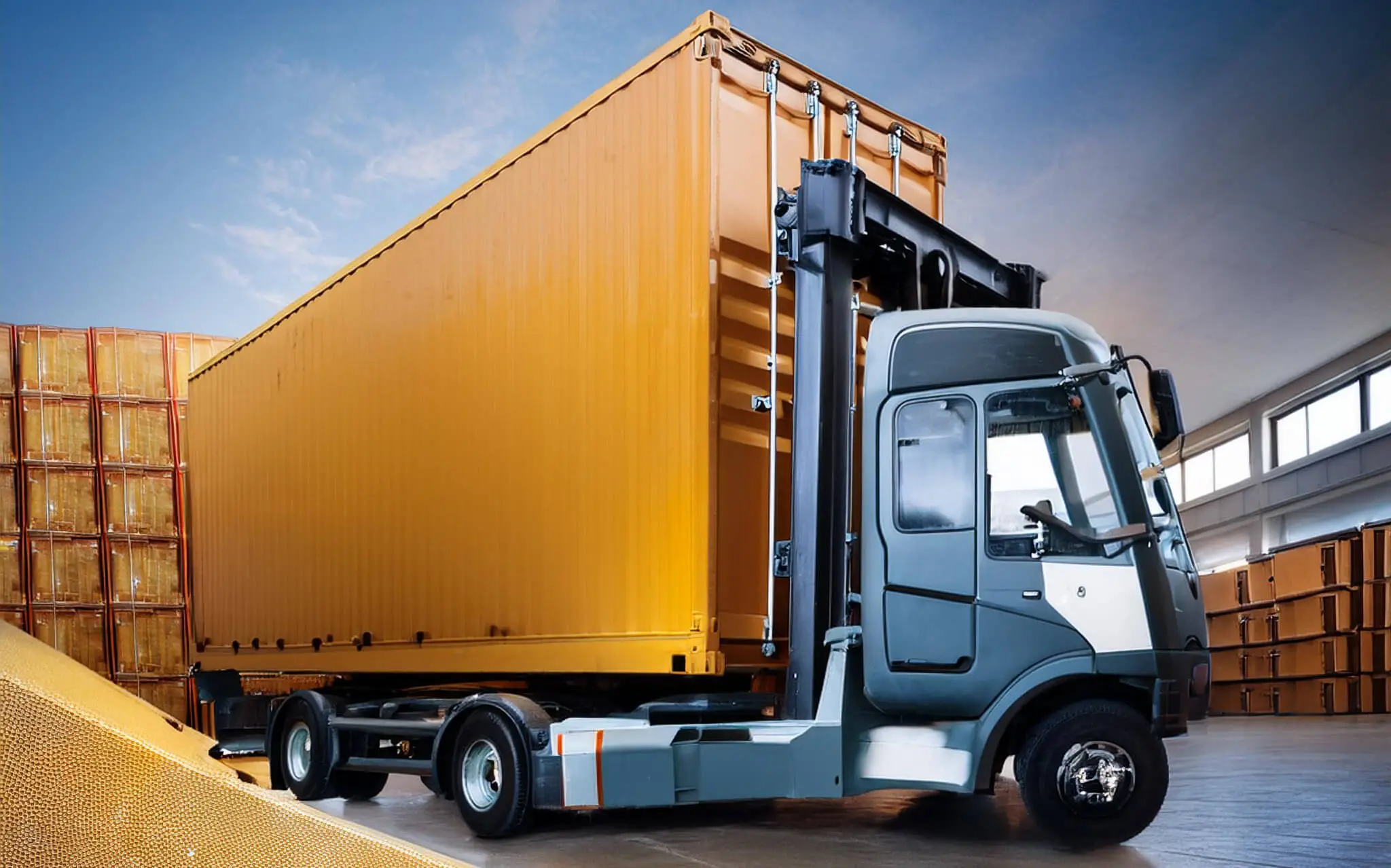When it comes to heavy load transportation safety, the stakes are high. Ensuring the secure transport of oversized goods is paramount in preventing accidents and protecting lives on the road. From rigorous inspections to specialized equipment, every precaution must be taken to guarantee a smooth and secure journey. However, even with all safety measures in place, the unexpected can still happen, highlighting the critical need for constant vigilance and preparedness in this industry.
Join us as we navigate the balance between efficiency and safety in transporting heavy loads. Stay tuned for expert insights and valuable tips to enhance your understanding of this crucial aspect of the transportation sector.
Key Takeaways
- Use appropriate moving equipment to ensure safety during heavy load transportation.
- Apply effective handling techniques to prevent accidents and injuries.
- Regularly assess the work environment for potential hazards and make necessary adjustments.
- Prioritize thorough planning and preparation before engaging in heavy load transportation tasks.
- Invest in training and education programs to enhance safety knowledge and skills among workers.
Importance of Proper Moving Equipment
Types of Moving Equipment
Various types of moving equipment are utilized in heavy load transportation, including forklifts, cranes, and pallet jacks. Manual and powered equipment differ in load capacity and application, with powered tools being suitable for heavier loads.
Specialized equipment is available for different industries or unique load requirements, catering to specific needs and ensuring efficient and safe transportation processes.
Selecting the Right Tools
When choosing moving tools, it’s crucial to evaluate the load type and weight to ensure they are appropriate for the task at hand. Consider the environment where the equipment will be used, taking into account space constraints and surface conditions to prevent accidents.
Assessing the operator’s skill level is essential to guarantee that they can effectively operate the selected tools, promoting safety and efficiency in heavy load transportation.
Inspecting Equipment Regularly
Regular inspections of moving equipment are necessary to identify any signs of wear and tear that could compromise safety. Implementing a checklist for safety features and operational components before each use helps in detecting potential issues early on.
Documenting inspection results is vital for maintaining compliance with safety regulations and standards, ensuring a safe working environment for all personnel involved in heavy load transportation.
Maintaining Equipment Properly
To prolong the lifespan of moving equipment, scheduling regular maintenance is imperative. Following manufacturer guidelines for servicing and repairs helps ensure optimal performance and prevents unexpected breakdowns during operations.
Training staff on basic maintenance tasks empowers them to take care of the equipment properly, contributing to its longevity and efficiency in heavy load transportation processes.
Assessing Work Environment
Evaluate Task Requirements
Analyzing the specific requirements of each lifting task is crucial for ensuring efficient and safe heavy load transportation. By understanding the load weight and complexity, companies can determine the number of personnel and machines needed. Allocating sufficient time for safe handling based on timelines and deadlines is essential to prevent accidents.
Analyze Load Characteristics
Examining the weight distribution of the load is vital to identify any potential stability issues that may arise during transportation. Determining the center of gravity ensures a balanced lifting process, reducing the risk of accidents. Assessing the shape and size of the load helps in selecting the most effective handling method for transportation.
Assess Work Conditions
Inspecting the work environment is necessary to identify and mitigate potential hazards that could jeopardize the safety of heavy load transportation operations. Checking for uneven surfaces, obstacles, or debris helps in planning safe routes for transporting loads. Evaluating lighting conditions is critical to ensure visibility during lifting and moving activities, especially in dimly lit areas. Considering weather conditions, such as rain or snow, is important for outdoor transportation to prevent accidents due to slippery surfaces.
Planning and Preparation
Plan Tasks in Advance
When planning heavy load transportation, it is crucial to develop a detailed plan for each step. Assigning roles and responsibilities ensures smooth operations. Anticipate challenges and have contingency plans in place.
Adjust Task Arrangement
To enhance safety, reorganize the workspace to create clear pathways for moving loads. Position equipment strategically to minimize unnecessary movements. Accessibility to tools and aids is key for efficiency.
Determine Safe Lifting Capacity
Calculate the maximum weight that can be safely lifted by the equipment in use. Consult manufacturer specifications to understand equipment limitations. Regularly update lifting capacity assessments based on changing conditions.
Training and Education
Continuous Safety Training
Implement ongoing training programs to keep staff informed about safety practices. Regular training sessions ensure that employees are up-to-date with the latest safety protocols. Workshops and seminars focused on heavy load transportation provide valuable insights and knowledge.
Encourage participation in workshops and seminars focused on heavy load transportation. These events offer hands-on experience and practical tips for safe handling of heavy loads. Employees can learn from experts in the field and share best practices with their peers.
Evaluate training effectiveness through assessments and feedback from employees. Feedback sessions help identify areas for improvement and ensure that training programs are meeting their objectives. Continuous evaluation ensures that staff are adequately prepared to handle heavy loads safely.
Establish a Reporting System
Create a structured reporting system for incidents and near misses related to heavy load transportation. Reporting systems ensure that all safety incidents are documented and addressed promptly. This allows management to take corrective actions and prevent future accidents.
Encourage open communication among employees to report safety concerns without fear. A culture of transparency fosters trust within the workplace, encouraging employees to speak up about potential hazards or unsafe practices. Open communication is essential for maintaining a safe work environment.
Analyze reported data to identify trends and implement improvements in safety protocols. By analyzing incident reports, management can pinpoint recurring issues and develop targeted solutions. Data-driven decision-making helps enhance safety measures and prevent injuries in the future.
Final Remarks
In ensuring heavy load transportation safety, remember the importance of proper moving equipment, assessing your work environment, thorough planning and preparation, and investing in education. By following these steps diligently, you can significantly reduce the risks associated with transporting heavy loads. Always prioritize safety above all else to protect yourself and those around you. Stay informed about the latest safety protocols and technologies to enhance your practices continually.
Take charge of your safety by implementing these strategies in your heavy load transportation routines. Your commitment to safety not only protects you but also contributes to a safer work environment for everyone involved. Stay proactive, stay informed, and prioritize safety every step of the way.
Frequently Asked Questions
What is the importance of proper moving equipment?
Using proper moving equipment ensures the safety of both workers and the transported goods, reducing the risk of accidents and damage. It also improves efficiency and productivity during heavy load transportation tasks.
How can effective handling techniques benefit heavy load transportation safety?
Implementing effective handling techniques minimizes the chances of injuries to workers and damage to the cargo. Proper lifting, carrying, and securing methods contribute to a safer work environment.
Why is assessing the work environment crucial for heavy load transportation safety?
Assessing the work environment helps identify potential hazards such as obstacles, uneven surfaces, or limited space. This evaluation allows for proper planning to address these risks and ensure a safe transportation process.
What role does planning and preparation play in ensuring heavy load transportation safety?
Thorough planning and preparation help in organizing the transportation process efficiently. This includes route mapping, checking vehicle conditions, securing necessary permits, and scheduling rest breaks to prevent fatigue-related incidents.
How does training and education contribute to heavy load transportation safety?
Providing comprehensive training equips workers with the necessary skills and knowledge to handle heavy loads safely. Education on regulations, best practices, and emergency procedures enhances awareness and preparedness for any situation that may arise during transportation tasks.


